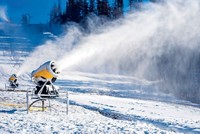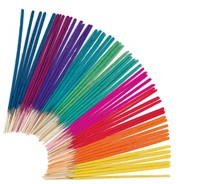Advertisement
Grab your lab coat. Let's get started
Welcome!
Welcome!
Create an account below to get 6 C&EN articles per month, receive newsletters and more - all free.
It seems this is your first time logging in online. Please enter the following information to continue.
As an ACS member you automatically get access to this site. All we need is few more details to create your reading experience.
Not you? Sign in with a different account.
Not you? Sign in with a different account.
ERROR 1
ERROR 1
ERROR 2
ERROR 2
ERROR 2
ERROR 2
ERROR 2
Password and Confirm password must match.
If you have an ACS member number, please enter it here so we can link this account to your membership. (optional)
ERROR 2
ACS values your privacy. By submitting your information, you are gaining access to C&EN and subscribing to our weekly newsletter. We use the information you provide to make your reading experience better, and we will never sell your data to third party members.
Fermentation
Newscripts
AI sweeps curling, and a new brew from wastewater
by Sam Lemonick
October 24, 2020
| A version of this story appeared in
Volume 98, Issue 41
Curling computer

In 1997, IBM’s computer Deep Blue beat chess world champion Garry Kasparov in a six-game match. Now robots paired with artificial intelligence have mastered the game sometimes called “chess on ice.” A pair of robots together named Curly beat a top-ranked South Korean women’s curling team and the country’s national wheelchair curling team in three matches out of four in December 2018 (Sci. Robot. 2020, DOI: 10.1126/scirobotics.abb9764), and the researchers say what they’ve learned from Curly’s success could be applied to other robotic ventures, like programming autonomous cars.
Curling, an ice sport in which teams slide large stones toward a target, is a particularly tough challenge for a robot, according to the scientists who built Curly. The sport requires both precise motor control and multistep strategic planning to place several stones in the right spots, all within a limited time. Plus, the ice conditions change constantly, says Dong-Ok Won, an AI expert at Korea University who was part of the team. Teams get points for having their stones closest to the target, which is about 28 m away. That’s usually achieved with a combination of making precise throws and knocking opponents’ stones out of the way.
Curly’s two robots are identical but work off different codes: one pushes and spins the curling stone before releasing it on its trajectory. A second robot records the stone’s motion and where it comes to rest, so the AI can plan the next move.
The robot-versus-human bouts were played without sweepers, the team members who use brooms to adjust a stone’s trajectory and speed as it glides. Wheelchair curling—a sport in the Winter Paralympic Games—is also played with no sweepers, and Won says they had trouble building robots that could sweep well. The robots’ accuracy was about 1.3 m, on the upper end of expert wheelchair curlers’, but the researchers say they can’t fully explain the robots’ success. It may be that the AI is a better strategist, or that emotions—nerves or hubris—affect the human curling competitors’ skills. But there is another possibility: Won tells Newscripts he and his colleagues were cheering for Curly during the matches.
Suds from sewage

Weak beer is often derisively compared with the product of micturition. The limited-edition Village Blonde released in August by Village Brewery in Calgary, Alberta, is definitely not that. But it was made with an ingredient some might find a little too close to urine for comfort: treated wastewater.
The idea came from the University of Calgary’s Advancing Canadian Wastewater Assets (ACWA) project, which tests and demonstrates advanced water treatment technology in the city’s sewage plant. ACWA doesn’t usually work on wastewater reuse—meaning turning wastewater directly into drinkable water. But along with Xylem, a company that provides water treatment equipment, the project team wanted to show people how wastewater can be recycled.
ACWA program coordinator Christine O’Grady tells Newscripts that it didn’t take much effort to convince Village Brewery to give the project a shot. ACWA took water that had gone through conventional wastewater treatment steps to remove solids, organic matter, and pathogens, then performed additional treatment steps using ultrafiltration membranes, ozone oxidation, and ultraviolet disinfection.
After passing the province’s water quality tests, the water was loaded onto a truck and driven to the brewery to be reborn as beer. As O’Grady points out, beer and water treatment have a long history; humans have known for millennia that the brewing process makes water safer to drink. The beer sold out quickly, and she’s not sure if it will get another run, but she hopes the project has people in Calgary thinking about wastewater reuse.
Asked if she had any reservations about tipping back a mug of the stuff, O’Grady said no. “I really believe in the technology and the science” behind water treatment, she says. And there’s proof it’s perfectly safe: “I have drank the beer, and I stand here today,” O’Grady reports.
Sam Lemonick wrote this week’s column. Please send comments and suggestions to newscripts@acs.org.





Join the conversation
Contact the reporter
Submit a Letter to the Editor for publication
Engage with us on Twitter